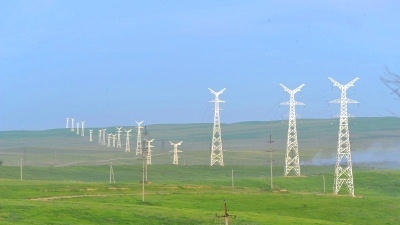ROOM FOR IMPROVEMENT
To be sure, the region did improve its energy efficiency in the period from 1990 to 2007 – energy intensity dropped 32 percent in Europe and Central Asia and EU-15 countries.
One key lesson gleaned from such reforms is to get energy pricing right, the report found. But the approach to that could be different in different countries. Of the countries that succeeded in getting their energy intensities down, some increased energy prices rapidly, while others did so in a more gradual manner and looked to civil society to help make the process easier. Nearly all successful countries removed energy price subsidies: those with the lowest energy intensity also included environmental taxes. Including environmental taxes within energy prices has not been easy, with governments careful about timing, gaining political support and providing opportunities for everyone to mitigate the impacts of higher prices through energy efficiency programs and social safety nets for the poor. The point to be noted is that energy prices are adjusted mainly to reflect all of the costs of energy supply.
Developing an energy efficiency policy, setting targets and passing laws and regulations to implement this policy is also important.
So are establishing an agency to monitor the energy efficiency program and developing mechanisms to coordinate it among different ministries and units, and ensuring that adequate low-cost financing is made available to compensate for market rigidities and other external factors. The best examples were countries that coordinated both horizontally among Ministries at the Federal level and vertically at the Federal, provincial and municipal levels.
MORE LESSONS THAN ONE
These measures would need to be constantly monitored and evaluated. Doing this would help high energy intensity countries to update their energy efficiency programs as needed to adjust for changing conditions.
Energy efficiency reforms often work faster in the industrial sector as compared to the residential sector. Policies that encourage industries, particularly ones in the private sector, to cut energy costs are crucial. The competitive environment within the EU implicitly helps encourage energy efficiency programs as a part of cost consciousness needed in a competitive market.
With the residential sector, taking a short-term approach (such as setting energy requirements in new buildings), medium-term (addressed through Buildings Certificates Programs) and long-term (through designing nearly zero-energy buildings) approach would help address energy efficiency issues, the report found.
Still, for energy efficiency measures to work, more work is necessary. For example, making buildings energy efficient does not cost more much more, while applying appliance standards and could be one more way to achieve energy efficiency. Lastly, knowledge sharing programs are also critical, the report found. The bottom line - good governance with strong and sustained support for governments is key to success.

